Opinion: 6 classics that don’t match their mythology
Anyone who’s ever read a comment section online knows that there’s no shortage of “expert” opinion out there extolling the virtues and vices of our favorite rides. Much of it is based on second- and third-hand experience, or even outright hearsay. That doesn’t stop the momentum from building, though, and before long a car gains a reputation that may or may not accurately represent the actual ownership experience. After having 40+ cars pass through my often-undeserving hands, I’ve developed a few opinions of my own, often running contrary to conventional wisdom.
1963 Buick Riviera
I’ll concede I’m probably not the target market for a first-gen Riv. Floating down a perfectly paved freeway for hours on end isn’t what I’d choose to do behind the wheel, even if I knew of a such a road anywhere near me. But that’s what the Riviera excelled at, sort of. Its undulating ride was more disconcerting than cruise-worthy. It had the turning radius of a city bus, and its puny brakes may have set a postwar record for largest inverse relationship between horsepower and stopping ability. And don’t get me started on the numb power steering. While the Riviera was certainly attractive, as a driver, it fell miles short of Bill Mitchell’s aspiration to build an American Ferrari. I sorely wish that Mr. Mitchell had been able to pry some brake, steering and suspension mojo from the excellent C2 Corvette. Sleek styling wasn’t enough to forgive its ills, so I’m forced to say the Riviera is overrated.
1965 Jaguar E-type
The Series I E-type is undoubtedly a good-looking car, regardless of whether or not you believe the story of Enzo Ferrari calling it the most beautiful car he’d ever seen. What is rarely talked about is how well the car drives, even by modern standards. It’s the opposite of the Riviera in that its chassis dynamics were commensurate with its good looks.
The Jag’s rack and pinion steering is delightful, communicative, and precise. Power assist isn’t even needed. The post-1964 all-synchro four-speed is a joy to shift, and its 4.2-liter dual-overhead cam straight six, while not rev-happy, makes good torque and more than adequate power. That said, I suspect its advertised 265 hp may have been a touch ambitious. No matter, at just under 2,900 lbs., it was good for 0-60 in about seven seconds. D-Type-inspired four-wheel disc brakes were good for the time, and while the car was set up more for GT-style driving than track-ready handling, if you could deal with the body roll, you could have fun exploiting the car’s power and near 50/50 weight distribution.
The car isn’t without its peccadilloes, particularly with regard to its electrical system. But ultimately, when you look at values of its more exotic competition relative to their performance and livability, The E-Type begins to shine. For that reason, I find this cat a bit underrated.
1971 Datsun 240Z
I’ve owned four first-generation Z cars, though I’ve never kept one for a long time. There’s a reason for that: of any car I’ve owned, the corner-cutting to achieve a bargain base price is most evident in a Z. There’s almost no sound deadening to be found anywhere in the car, from the floors to the lightly padded, vinyl headliner, and as a result the freeway drone is maddening. In addition to the gratuitous noise (I will admit that the actual exhaust note is pleasing), in any significant crosswind, the early Z’s freeway wander is downright scary. The BRE front spoiler helps, if only a little. Inside, the plastic quality is backyard kiddie-pool spec.
I suppose it’s not really the car’s fault—it’s so pretty, and it handles and performs so much above its class that you expect the details to be as nice as a Porsche 911. They’re not, so I’ve always considered the Z to be a bit overrated.
1979 Porsche 924
If ever there was a car for which I had low expectations, this was it. I’m a multiple 911 owner, and before this car, I’d never owned any flavor of transaxle Porsche—certainly not the one deemed to be the worst of them, the original Audi-powered 924. I bought the car for $2,000 to do a “2,000 miles in a $2,000 Porsche” story for the magazine that I edit, Porsche Panorama. It was a middling road trip story at best, mostly because the car gave me zero material to work with. Nothing broke, though if it had, I think I could have solved most of it on the roadside because of the car’s inherent simplicity. Was it a little buzzy and underpowered? Yes, but the car’s beautiful balance, solid build, and sturdy honesty made up for that. As did its attention to aerodynamics, which gifted the 924 a lack of wind noise and near 30-mpg thrift on 87 octane fuel. Subjectively, I also found it quite pretty. The 924 surprised me in the best ways, and since then, I’ve considered it the essence of an underrated car.
1975 BMW 2002
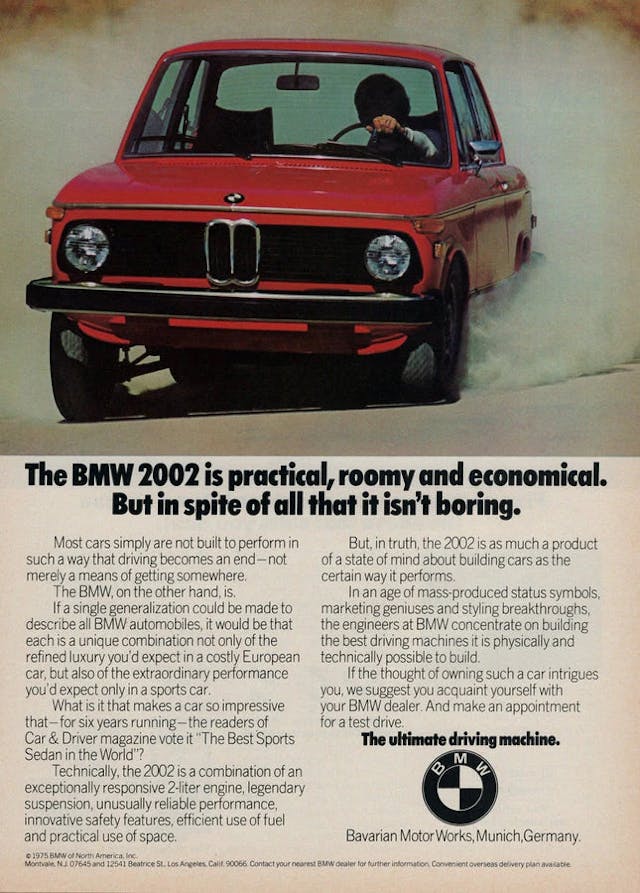
My 2002 was the exact opposite of the 924. The little Bimmer was a car for which I had huge expectations, most of which went unfulfilled, particularly in light of David E. Davis Jr.’s assessment that the BMW 2002 was the best way to get somewhere sitting down. It’s not that there weren’t any positives. The 2002’s driving position and outward visibility were top notch, but I found the car to be buzzy and underpowered in a far more egregious way than I found the 924. The lack of fuel injection combined with crude emission controls made for annoying flat-spots in the power curve. The car’s ventilation is largely theoretical—no face level dash vents at all, just ancient vent and quarter windows, and a sunroof if you’re lucky. The fake wood applique on the dash reminded me of a VW Scirocco. The steering that I expected to be super-quick was somewhat heavy and a little dead on center. Truth be told, by the time my 2002 was built, it was a fairly ancient design, and the injected 2002 tii was the spec that you really wanted. That said, I found the 2002 to be a generally overrated car.
1968 MGC GT
I actually had the experience of owning an MGC and a Datsun 240Z at the same time. Odd, because the C is the car that the Z wiped off the face of the earth. The MGC is the rare, six-cylinder version of the MGB that was deemed in-period to be an utterly inferior car to the Japanese upstart. I didn’t find that to be the case. In spite of their wildly differing reputations for quality, the MG felt more expensive in every way—the seats were covered in good-smelling leather, the chrome-ringed Smiths gauges looked nicer, and the whole car just felt more solid. As a freeway cruiser, there was no contest—the MG was somehow nearly impervious to crosswinds, something I discovered when I got caught in 65 mph gale-force winds on I-5 in between Seattle and Portland. With the overdrive engaged in fourth gear, it was also much more relaxed at speed than the Z. With its independent rear suspension, the Z was a better handler, but with the proper tire pressures (this is critical for the slightly nose-heavy MG), the C was no slouch either. On the whole, I found the MGC GT to be vastly underrated.
What about you—did your time in one of these cars dissuade you from the mythology that surrounds it, or confirm its greatness? Which car have you owned that provided the biggest contrast to how it’s perceived?
***
Check out the Hagerty Media homepage so you don’t miss a single story, or better yet, bookmark it. To get our best stories delivered right to your inbox, subscribe to our newsletters.

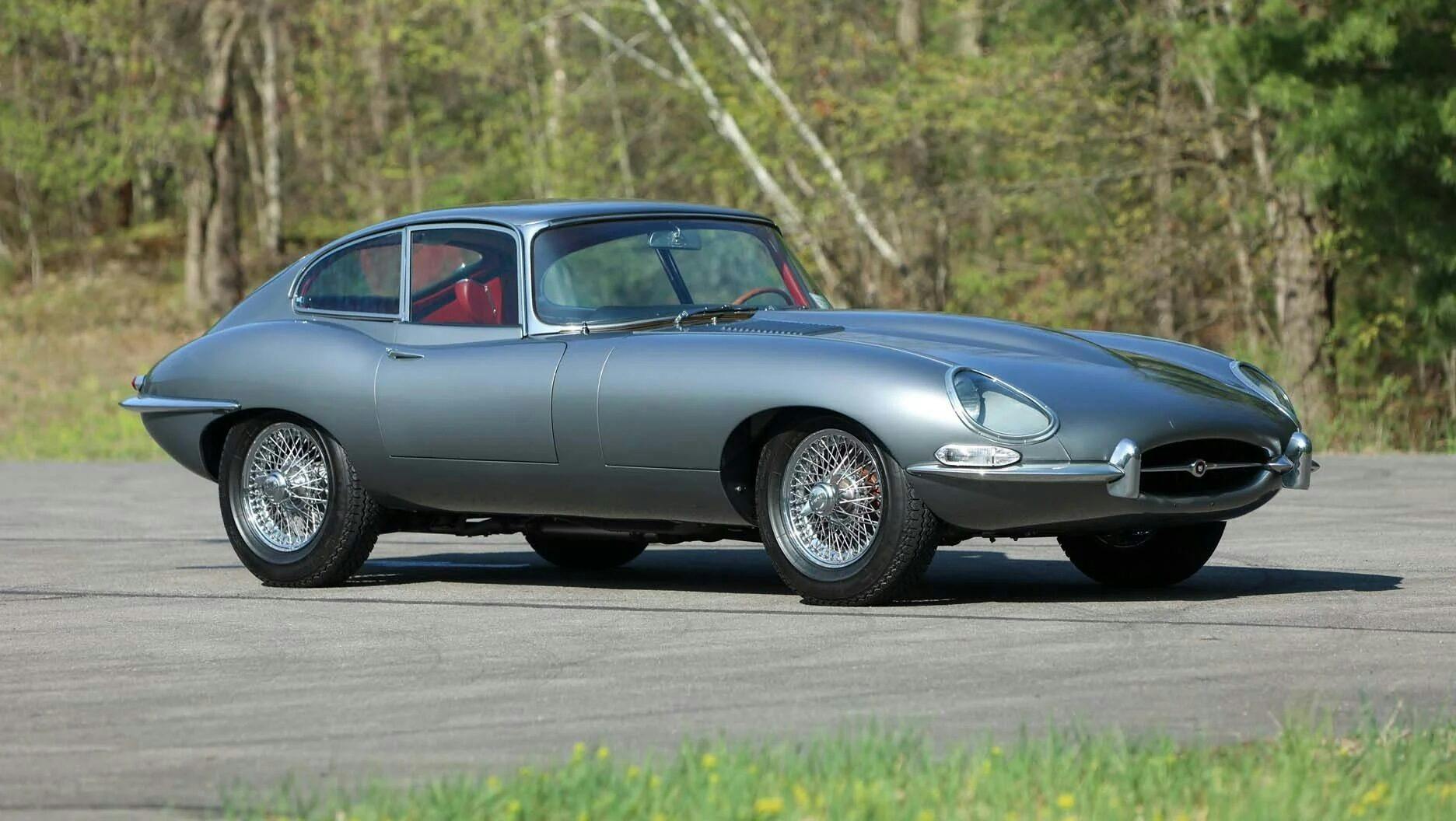
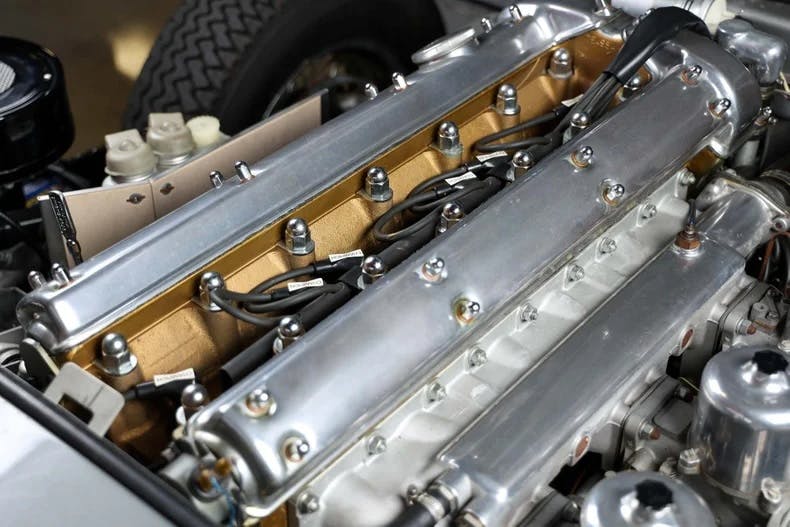
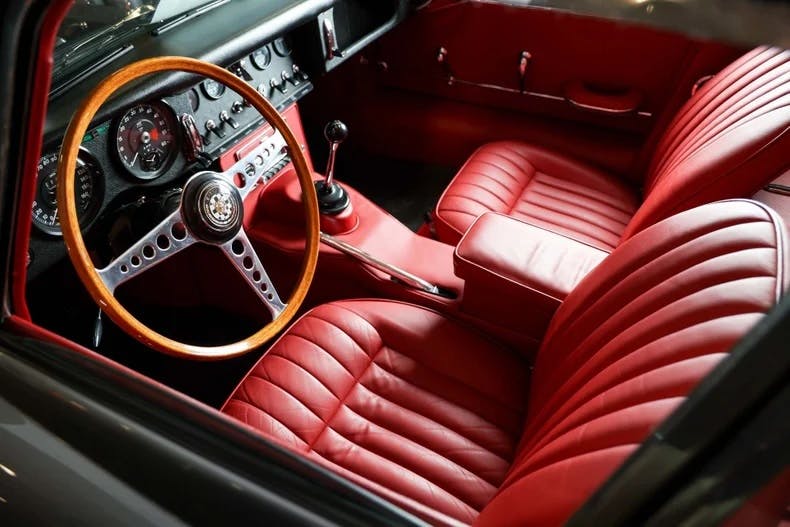
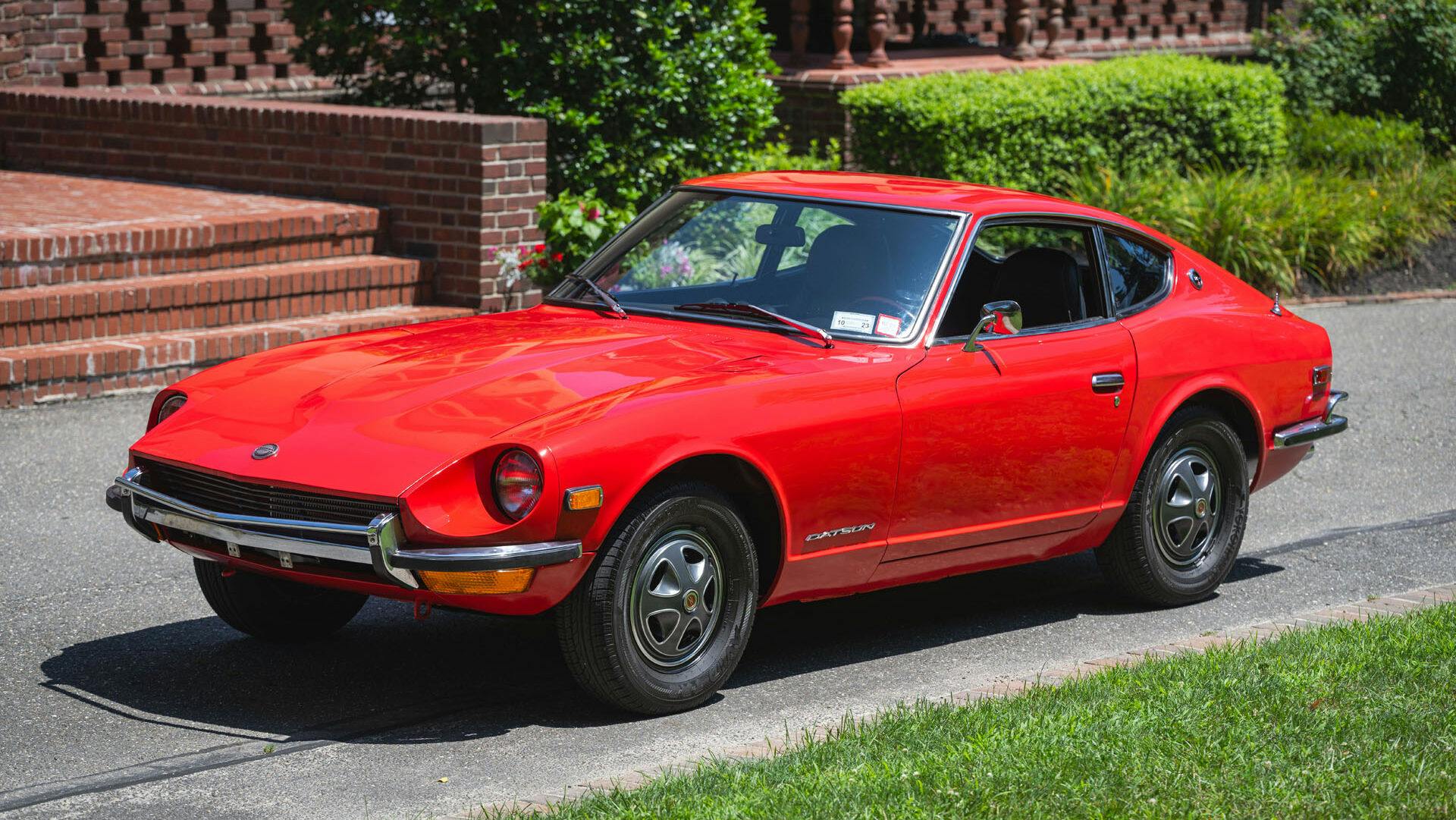
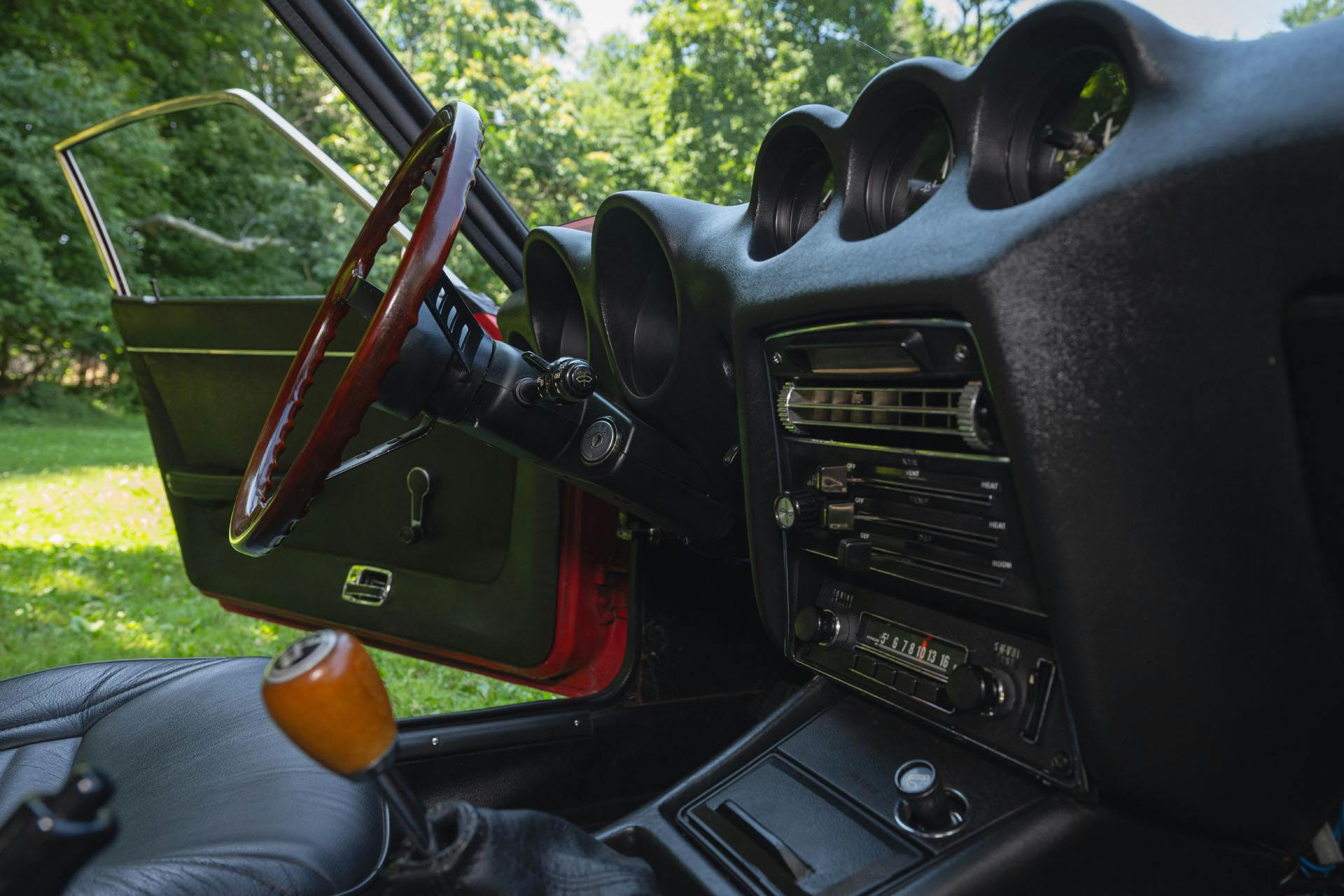

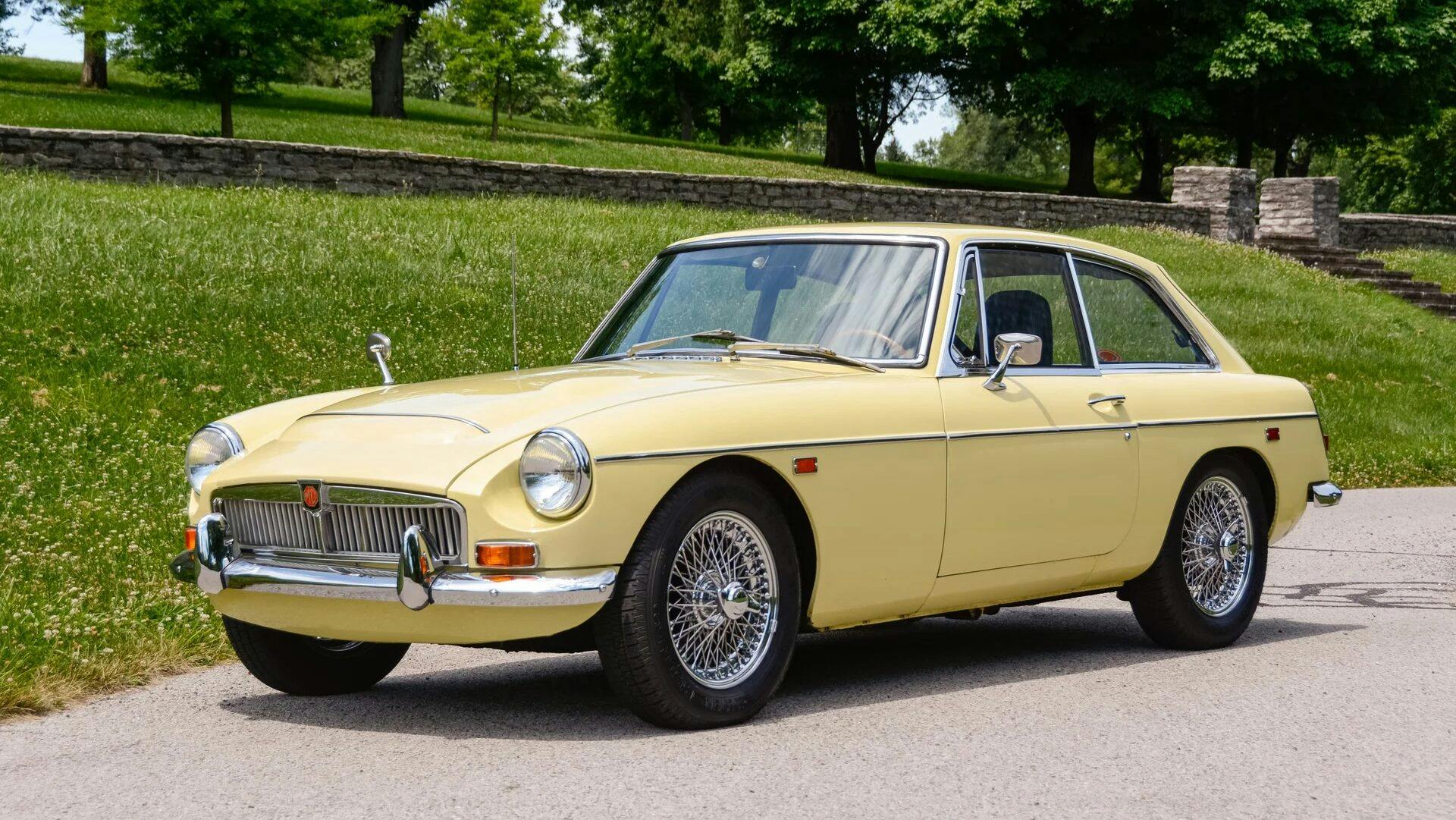
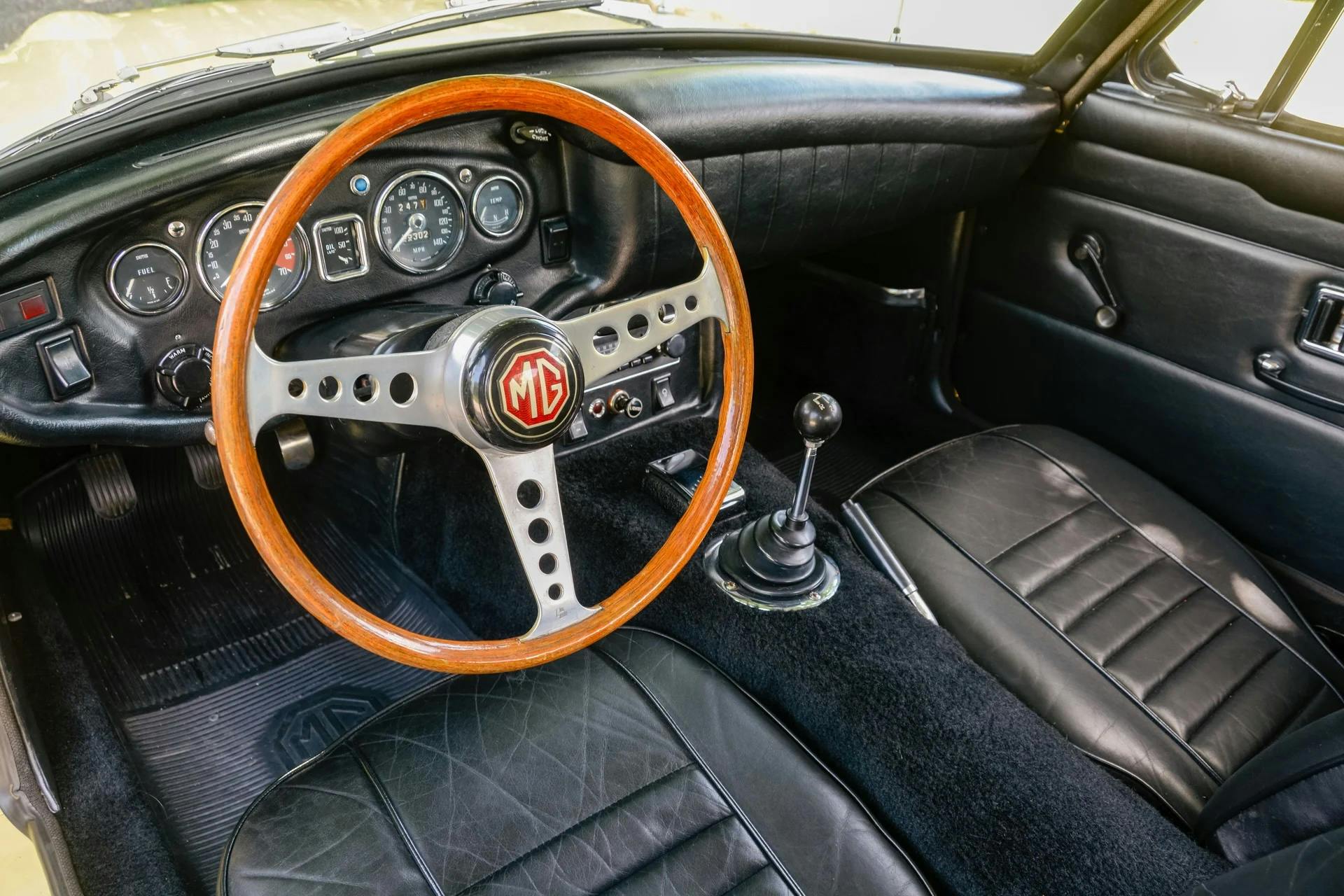
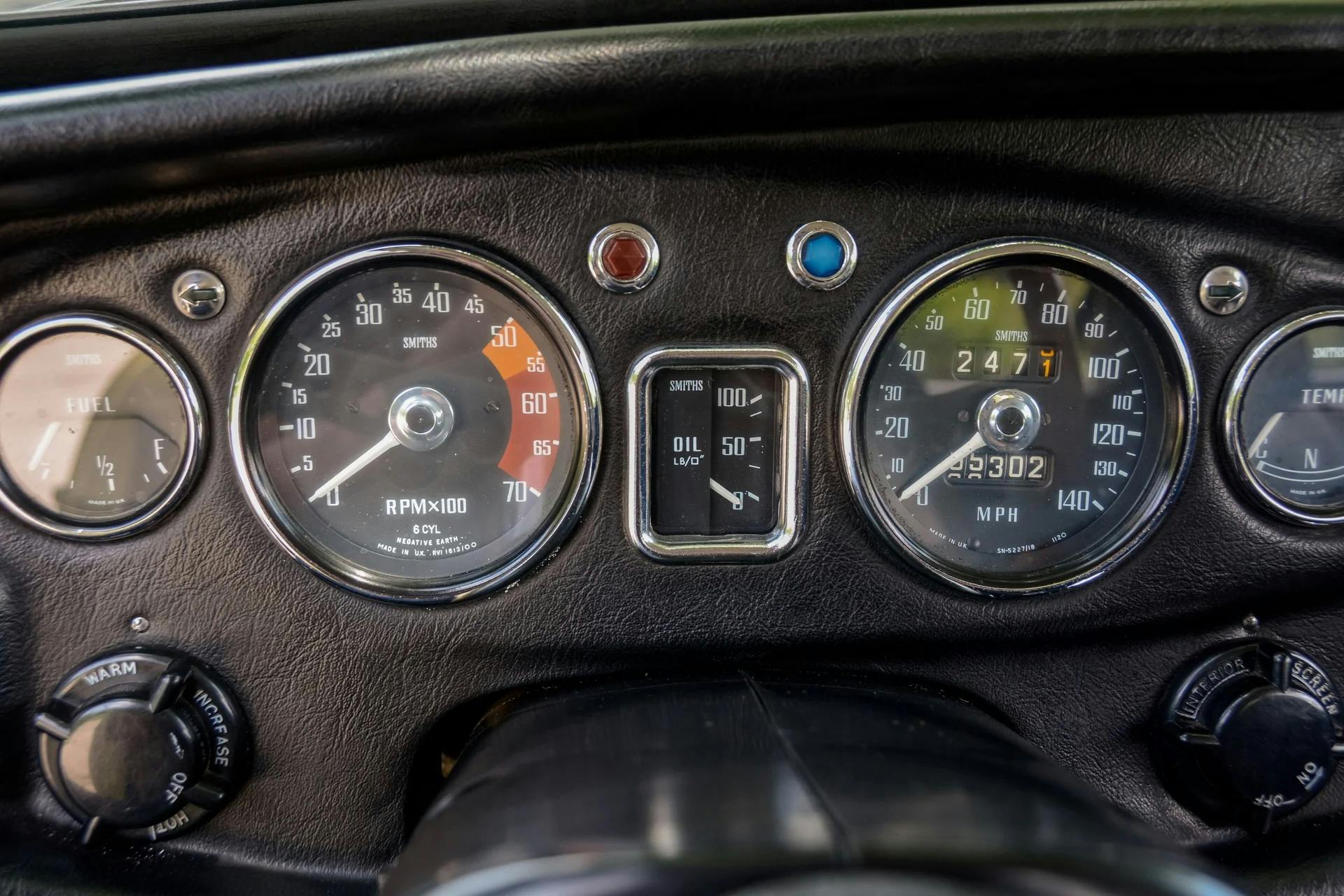


Rob I think you missed the point of the Riv. I have driven the 63 often and even the 65 Grand Sport with the duel quad. It was never a sports car as it was downsized but still was a large highway roller.
Like the 4 seat T bird and the Grand Prix these were just a bit smaller coupes that still represented the full size ride and power but never a car to compete with say a 250 Lusso.
The Jag is a fair assessment. As is the Nissan. The 924 was a low buck effort that failed. Only till it got a better body and turbo did it become the car it should be. The BMW was ok new but they just rusted out badly here.
We track timed a 924 and found it boring as it just never had enough to push limits. It was like a go cart with a limiter.
I did make nice chairs from the seats for my garage from it.
Agree with hyper. And the Rivera had outstanding brakes compared to its cousin the Olds Toronado. At least you could stop twice in one day while the Toro simply couldn’t.
You can’t make one car seem better by comparing it to an even worse car! 😆
Sure you can – people make those type of comparisons all the time, and many of us even find ourselves voting that way.
true dat
So which is better (or worse)?
a Renault Le Car or a Yugo?
Do you know why a Yugo had the heated back glass.? It was to keep your hands warm when you were pushing it in a Minnesota Winter!!
Assuming the battery wasn’t dead…
The early Olds Toronado had HUGE front drum brakes and very heavy front wheels. Tire changing was tough, final wheel/tire install included torque wrench for proper ft lbs. They were front-wheel drive beasts.
My father had a 66 Toronado which he kept for fifty years. One of my most interesting memory as a kid was annually re-packing those gigantic Rzeppa needle bearings (’66 only IIRC) for the front drive wheels.
Yes, it was possible to overheat the brakes (the car had a curb weight > 4500 lbs), but not if you were driving rationally. We used to cruise the car @ 80mph on the throughway and the mileage was a bigger headache than brake fade.
B
The 924 failed? I don’t consider selling over 120,000 of them a failure. And that is the non-turbo, non ‘S’ ones only.
Owned a 924.bought it new in 1979.it was a great car. I also had 2 z’s,a1971 and a 1974 2 ➕2. I loved them both. I was playing in a Rock&Roll band in those years and damn they were fun!
A 63/64 Riviera does not have to be boring. Back in the day, my sister and her girlfriend, both California type beauties used to drive down to the Cinnamon Cinder in the San Fernando Valley on Tuesday night for dancing to well known bands. Going home one evening they were being chased down Ventura Blvd by two guys in a Jag. In order to lose them, my sister’s friend swung the car at speed down an alley and once again at speen made a right turn into a much narrower alley off the main one and hid for about 30 minutes, until they felt the Jag had left. At that point, the driver had to retrace her tracks to get out of the narrow alley and could barely creep through it at a walking pace without scraping either side of the Riviera. Believe me that was exciting!
The 924 did not need a turbo to be good, it became a contender when Porsche installed its own balanced, normally aspirated 2.5 liter 4 cylinder, 147 hp engine and the more muscular body. That was transformative.
Agreed, Hyper.
63-64 Rivs had 12”x2.25” front drums and 12”x2” rear drums. That’s a decent amount of swept area for a 4,100 lbs car.
As stated, bigger than the Olds. Bigger than Ford, while bigger and heavier Chryslers had 11”x3” drums.
Jim Wright wrote in Motor Trend April 1963 that – the finned aluminum front drums in the Riviera helps the brakes cool and recover more quickly than the competition, while it is able to complete 2 additional panics stops versus the same competition before fade becomes an issue. In terms of cornering, the Riviera is stated to have cornered flatly thanks to a large front anti-roll bar and that it “the Riviera could be whipped over the twisty mountain roads with the best of them.” Finally, “it handles easily in traffic and can be parked by anyone.”
Thank you for your opinion, biased and un researched as it may be.
More classic Bucks for the rest of us.
Interesting that the author originally panned freeway driving in assessing the Riv, and then proceeded to use freeway driving attributes as “pro” points for the Z and MG. I agree on the “underrated” of the 924. I once had a 924S that was scoffed at by the local purists, but it was a wonderful car. I loved the looks, and it was a blast to drive. Living in an area where one direction takes me into the mountains and the other onto long, flat highway-through-the-desert trips, I was able to enjoy the little Porsche in a lot of different types of driving. It performed admirably anywhere I took it.
A good observation on “that freeway stuff”.
I liked your comments on the 924 — you’ve altered my opinion.
Did we read the same story?
“In addition to the gratuitous noise (I will admit that the actual exhaust note is pleasing), in any significant crosswind, the early Z’s freeway wander is downright scary.”
That doesn’t sound like praise for freeway driving to me.
The 924 and the 924S are two VERY different cars. They only share the body and really can’t be compared to one another.
There is only one reason the 240Z is over rated RUST I owned a 72 and drove it 130 mph the day before I sold it. Do not buy one if it is undercoated. The rear fenders are the first to go followed by the under cartage, and floor pans. The structure of the front torsion bars will peel away from the rear forward under the floor pans. Even had the top of the front fenders blister. Sold it because of the rust, I could not resist pushing the car to it’s limits. I could have been a catastrophe.
Still would rate a rust free, if the truly exist, as one of the best drivers I have owned. I never experienced the hi way “drift” and with good struts handling was fantastic.
2X Jim – I don’t know if he bought the wrong cars but having owned 3 280Zs, the favorite had a heavily worked over 6 and 3.32 rear. I hit 146mph @ around 5200 rpm with otherwise stock (but new) suspension and while the front was getting a little ‘light’, it did everything I expected, and “drifting” was not one of them!
I agree about the 77-78 280z as solving many of the issues with the 240s. Actual carpeting, better soundproofing and fuel injection all help. I still have a 77 2+2 and it is a great highway cruiser. The front end does get noticeably light over 75 or so, but it is smooth and quiet for a long drive.
3x Jim – Bought a ’73 Z new when I was in my 20s and owned it for ten years and 130,000 mechanically trouble-free miles. New England rust is what ultimately induced me to sell it I think the biggest maintenance expense over those years was regular replacement of the front struts, which may be why I have no idea what “freeway wander” is.
My only complaint was the Z’s handling at limit. My previous car, a well-behaved 1600 BMW would give plenty of warning by letting the rear end get loose first. With the Z, everything would seem to be perfectly fine until all four wheels might decide to simultaneously break free. “Twitchy” would be my word to describe the behavior.
B
I’d add the Honda CRX which people often lament why can’t they make em like that anymore . I bought a brand new 1988 CRX Si in the fall of 88 after reading auto magazines praise the car . With 108 horsepower it wasn’t blazing fast , but the worst part was hitting the rev limiter far too soon with the high revving v-tech engines not available yet . It’s short roller skate wheelbase had it almost flying off the road on freeway expansion joints making any high speed travel on such roads downright scary . The angled center console would dig into your right leg . Looking down on it’s stubby hood you could see the thin sheet metal visibly flex when driving down the road . I kept it for 2 years and didn’t miss it in the least when I sold it .
The 2006 RSX Type S I leased for 3 years was everything the CRX claimed to be and wasn’t . I test drove a 89 CRX HF back in 2001 as a potential commuter car and taking that tiny car out on the freeway was like driving a toy among real cars . I’m guessing people longing for the CRX of their youth haven’t driven one lately .
Following on that, from what I see the RSX is an underrated car. For some reason Integras get all of the love.
I drive my first gen CRX-Si every weekend the Midwest weather allows. It’s basically a front wheel drive Lotus Elan, and if you drive it like that, it’s more fun than anything you can buy today. 1800 pound cars with short wheelbases just aren’t made anymore. Sorry it didn’t work for you, Bruce, but I love mine. As a bonus, nothing on the car never breaks. Honda!
The Opel GT! Great looker, but…. It had an anemic tractor engine, lousy performance, no trunk, infective brakes, rusted immediately, handled horribly. Looking good didn’t make up for all of the faults. Over rated!
You must’ve been driving the older version. I had one with the larger engine, and performance was great. I had mine up to 105 for about ten minutes once. It got its best mileage at 80 to 85 mph. The only rust problems I ever saw with these cars were caused by owner neglect. The battery was located on the pan in front of the radiator. If the owner took a look at it every time he/she checked the oil, things were fine, but if the battery ever leaked, the pan would start rusting. The main problem was that the larger engine required 95 octane unleaded fuel, which was only available from Amoco at the time (late ’70s for me). As for the lack of a trunk, the entire car behind the seats was cargo space. We never completely filled it up, even on trips.
I whole heartedly agree. I owned an Opel GT with the 1900 and it had adequate power, wasn’t a muscle car, excellent fuel mileage, great handling, no rust, beautiful looks, lots of space behind seats. In my opinion highly underrated.
I had a 69 with a 1.9 liter and had mine up to 130
If the car got it’s best gas mileage at 80-85 mph you must have figured out how to break the laws of energy (mass times speed squared).
In a car with decent aerodynamics, you’ll get your best mileage in high gear at the engine speed at which the carb produces the most perfect mixture.
Drag increases by the square of the speed, so that is not correct regarding ‘high gear’ and ‘most perfect mixture.’ Finding each car’s mileage sweet spot is a bit more complicated than that.
If one looks at the specs of a typical GA aircraft, the difference in speed between 75% and full power is often only 2 or 3 knots which illustrates the effect of increasing drag, and of course at full power the fuel burn is much higher.
The Opel just needed to start with the 1.9. Decent power for its weight. Add the dual Weber side draft 45DCOE carbs that mine had, and it not only sounded great from the intake but had decent chops to back it up. Granted, mine was a Southern California car, so rust was not an issue in my case. Considering how generally unloved and unknown it is, I will say it’s not underrated. It may not be a perfect car, but good specimens could be had for low money and return a good fun-per-dollar ratio.
” A lid for every pot.”
And, a chicken in them!
This made me laugh. thanks!
Haven’t bought a lid of pot for a long time.
LMAO!!!!!!
I have yet to own some of these cars aside from the Honda civic Si it was great in the city but the highway was something else.
I did love the car plus I would get chased by teens wanting to buy my Honda. They never told me how much they would pay me but I wasn’t in the mood to sell just yet as it was a good second car as my truck took too much gas in town or out. And it cost aroud $100.20 just to fill it up. I would race it on the over pass around the city and never lost not once as it would spin the tires and make me smile like I was at the strippers. Plus it was manual and my kids couldn’t drive a stick yet so they never borrowed it. I kept it clean and running smooth. Until the clear coat started to come off and made it look ugly i was accused of using lacuor to clean it. That’s why they thought the clear coat was coming off, but a friend of mine had she exact same car and the clear coat was coming off it too. And she doesn’t know what laquor thinner is or how to use it.
With regard to to the Riviera, that is the most ignorant commentary I’ve ever read. The author apparently has never owned a first generation Riv. I have and it was never intended as a sports car, the power brakes were great for drums and it is quite agile for such a long car with an acceptable turning radius. Don’t talk about things you have no experience or perspective on
Most GM cars had a pretty good turning radius, Fords were horrible
I owned both. Gm were horrible. Ford were better by far.
Easy enough to look up – 1963 Riviera 43 ft radius, 1963 Thunderbird 40 ft.
Ford trucks needed a big circle to turn ‘em in. Cars were pretty normal.
My very first car that i bought with my own money was a 63 Riviera admired them when they were new and I was a 13 year old years later as I started my family this was our mode of transportation until while parked it was hit and damaged beyond repair, it was a hellofacar ,sky blue with real navy blue leather interior, we loved that car, my wife and grown children still recall fond memories of our Riv
Reply to Stanley.
I have the very Riviera you describe. A 1963 First year. The color is called Glacier Blue with navy blue leather seats, power steering, brakes and windows and factory A/C. It drives like a dream.
The one American made car on your list in your opinion is crap. To me your opinion means nothing. Move to a country with the cars you want.
I think he read too many Sports Car Illustrated and Car & Driver magazines.
That’s not my opinion!
Well, Tim, to me your opinion means you mix nationalism with anything… why should the author like the Buick Riviera or list an underrated American car?, why should he move to another country?… besides, all the cars, under or overrated that he lists in the article are plentiful in the US relative to other countries… I am not sure if your comment intends to be ironic or if it is just weird…
Correct. For the era and for drums/shoes, the ‘63 Riviera/Wildcat/Electra brakes were excellent, and the ‘63 Corvette Grand Sport racers even used a version of these big Buick drums. Why is this author calling them ‘small’? They were anything but. Poor research.
My college roommate owned a 63 Riviera which I drove frequently and wrenched on several times. The 425 “nail head” was classic GM (good motor). Air gap intake, carter AFB, No Replacement For Displacement, a Buick T400 auto. Loafing down the highway at 80-90+. We took it on a long road trip from Portland following the Columbia river in to Washington & to the triple divide in Montana into Canada returning via Kamloops and Seatle. We updated tires to radials, better shocks and custom alignment (I use 70-81 Camaro specs on
60s cars fitted with radials). Handling was much better. Brakes were as good as 4 drums could be. The previous owner of My C5(an inlaw) had a 64 Riv for several years and loved it!
Your friends car must have had a transmission swap somewhere along the way. ’63’s had a Dynaflow.
I agree with Mark Nathenson, I owned a 63, 64 GS and a 65, the Finned aluminum outers of the drum brakes were quite effective in bringing my cars down from speed. My brakes worked as designed on my cars. Let’s not forget the goal of the Riv, it was a personal luxury car targeted at single men wanting something ‘sporty’ (looking) and making a statement about their wealth—>don’t forget that a Buick was just under Cadillac in the hierarchy (Cadillac, Buick, Oldsmobile, Pontiac and Chevrolet). Beautiful styling and the “X” frame under it made for a car which sold well and was basically unchanged for those three years aside from lighting ques. Corvette was the American Sports Car in GM’s portfolio
Mr, Sass, did you discuss the BMW 2002 with Mr Hack Mechanic before dissing his go to ride. Like wise several other knowledgeable commentators have noted that the first generation Rivera is not and was not a sports car. It was one of Bill Mitchell’s seminal designs, and in a lot of people’s minds was the peak design statement of the early 1960’s.
Hi Helen. I think he should have bought an earlier 2002 than the 1975 that he owned. I have owned over 200 cars since 1955 from the first, a 1939 Vauxhall Ten to my current Ford Focus. Included in the 200 were 5 or6 Mustangs, lots of “sports cars from MG TD to Ferrari’s, Mazerati Mistral, Porsche’s, Buicks, etc. etc. and my favourite of ALL was/is still the 1969 BMW 2002. I am now coming up 85 this year and if I were able to have back just one of my earlier cars to see out my days with, it would be the 2002. Greatest all rounder of the lot.
The author drove a 75 2002, dragged down by federally mandated stuff. Since when have the Feds done a fine job with automotive design or engineering? Drive an early (68/69) car with a minimum of Federal doodads: more horsepower, 200 lbs less weight. You’ll change your mind quickly. And don’t forget the 02 was based on the Neue Klasse sedan, which first saw the light of day in 1961.
Sister had a 70 2002 ; fun car, she had 275,000 miles on it! By 75 they were heavy gutless little sedans.
LOL, just because Rob Seigel fawns over his 2002 doesn’t mean the car is worthy of a pass. They get far too much credit for what they are.
“Dead wrong in public” ad one of my favorite sportswriters used to say…..working on a Datsun race team in ’78, I had an opportunity to drive a 924 and 2002 at Laguna Seca, on a photo day. The 2002 was beautifully balanced(I confess I prefer engines mounted ahead of the driver…..back then, leaning on a Porsche usually meant playing catch with the tail, entertaining for a while, but eventually tedious), with steering that was superbly communicative, wonderful turn-in, and a rear that would rotate as requested, instead of telling you to pay attention. All attributes that contribute to creation of its legend, discovered by generation after generation of driving aficionados.
The 924, in contrast, with its intentional high polar moment of inertia, Porsche choosing to do a 180 degree switch from the chassis dynamics of its rear engined configuration(also inflicted on the 928), was reluctant to change course, discouraging, not inviting one to attack corners. The heavy and lazy turn in made it an unwilling partner in the dance of driving. Almost two decades later, driving a 944 Turbo at Sears Point nee Sonoma Raceway, now with big tires, brakes and thrust, the basic characteristics remained. Unwilling to alter its course without a heavy hand and deliberate intention, it would generate a high lateral grip, stop ferociously, and (eventially) launch with alacrity……a classic case of a good “numbers” car, that still wasn’t fun to drive, even if highly competent.
Laughter….
Well to some extent it depends upon how you use the car.
Ive owned a Rivera and with going to a higher spring rate a set of custom valved Bilstein shocks slightly oversized radial tires and setting the front end up with a little more toein found it to be an ideal car for a relaxed commute in LA traffic and a delightful car for high speed commute to Las Vegas…think in the 80 to 110 mph range.
Running on 8bbls the 425 got lousy mileage but that was the price of admission. Brakes were adequate. The car would easily pull Baker grade at 90mph with the air on in August.
Im sure the car would not have been a good ride at Laguna Seca.
I never owned a 240 Z but Ive driven stock ones. My reaction was the car was a three fifths copy of a 300 hp C2 Corvette in every respect and boring. My girlfriend had a 280ZX and it was a bit better in every respect with air better cabin better seats etc.
Too much shifting in LAtraffic and underpowered on the open freeway.
I owned a 65 E type. Beautiful car.
The disc brakes were nice till you had to work on the rear brakes which were inboard. Ok up to around 80 mph then the engine let you know it was working. Couldnt drive it in hot weather. Electrics were from the Prince of darkness. Inferior in every way to the 65 Fuel injected Corvette i owned at the time.
Finally I pulled the engine and trans put in a big a luminium radiator with 7 blade clutch fan and installed a 347 small block Ford which dynoed at 410 hp and a Tremec 5spd took all the wiring out completely rewired the car and that resulted in a car that was actually useable.
I never owned a BMW . I had a friend who woned 3 of them and he was always under the hood of all 3. I had occasion to drive a 540 M when it came out and was VERY impressed.
The Porsches back in the 60s thru the 90s were a mixed lot. I drove a 924 and found it marginally better than a 914 or a Sirraco. I never drove a 924 turbo. I did drive a 944 turbo and found it marginally ok. I actually bought a 928 S and liked it very much. The car was more a GT car than a sports car but it was hard to beat for relaxed high speed long distance trips. Think well over 120mph.
After the Jag experience I never owned another English car. Nor did I own another Porsche or BMW. Instead I settled on the Mercedes E55. Followed by an E63. Followed by a 2007 Clk65 twin turbo V12.
As it sits today modified by Renntech the car makes 670 hp .
It will pull up to around 190mph and although maintenance intensive is a delight to drive. I did have occasion back in 2005 to race an acquaintance who fancied himself a hotshoe in his M3 BMW with my E55.
It was no contest on the flat and in the canyons. I beat him badly.
Its my understanding that Porsche FINALLY got its 911 series cars to handle well by putting huge tires in the rear. They managed to get decent hp by water cooling although the heat exchanger has a or had a distres s ing tendency to mix the cool a nt with the engine oil. Maintenance intensive with relatively shortlived engines. Ive had occasion to race some up in the canyons in SoCal using my C6 zo6 with a few mods by Katech.
No contest. But that was back in 2015.
Since then I understand the 911s have gotten better.
Maybe.
My ‘65 FI Corvette Coupe is still the one that dreams are made of. It takes my breath away every time I see one. Underrated.
I love articles like this one. I once owned a 95 Fleetwood and 98 Signature Series at the same time. I found that the caddy handled pretty well on the highway and took curves well but, I enjoyed the lincoln so much more. The lincoln had more styling that was unique to it. It also required less trips to the shop. It handled city traffic so much better and I got better gas mileage from it. Overall though both vehicles were true examples of American luxury.
Off the listed topic but I had some young guy experience with Caddie’s and Lincolns. Why I was 13-14 or there abouts I used to caddy at a pretty upscale country club. In those days, transportation was trying to hitch a ride to and from. No rides from mom or dad. The country club would allow us to sit at the entry, by the road in the afternoon and occasionally one of the members would be going your direction and give you a lift. That was when I got to ride in Caddie’s and Lincolns. I guess those were the vehicles of choice for the members. Us caddys were from Ford and Chevy families so getting a ride in a luxury car was a treat. For several summers I caddied so I got to ride in a number of those type cars. After a while it was obvious to me that both marks were pretty nice cars: leather, quiet, floaty…. but after a while it became clear that the Lincolns were much nicer cars from the standpoint of pure luxury and comfort. I have no idea how the performance was, how they drove or anything else but I still remember sitting in a Lincoln was more upscale than our living room furniture that my mom would not let me sit on. I still remember the soft leather, the luxurious smell and the comfort. Oh yeah, and being summer, got to enjoy an air conditioned car. What a treat
Hi Rob, your on something great is honestly exposing the truth of what automobiles are underated vs overrated
I had a 5 speed 1979 Porsche 928 and it was an incredible yet enjoyable vehicle to drive, especially fast. My only con, it was a beast in the city limits or traffic because it wanted to run in the wild
But, Porsche enthusiasts labeled the 928 as a step-child, and the truth is, it has always been underrated
Thx and keep up the good work
Donald, I agree with your comment on the Porsche 928. I own a ’86 1/2 (S4 engine) 928 and I love it! Acceleration could be a little better but you can’t beat the handling and comfort. I enjoy taking on it long rides, especially along curvy roads. I believe this car is severely underrated.
I was waiting for the 928 owners to chime in. IMO underrated often means underappreciated – and that’s often a result of unawareness (if that’s a word). The 928 is built like a tank, only gets better with properly maintained but relentless use, has wonderful driving characteristics and is a hell of a lot of machine for the money.
In the company of its 911 brethren, the 928 will always be underrated by those who have never driven or owned one.
Two underrated cars that fly under the radar – Triumph TR8 and Dodge Shelby GLHS. Owned both of them. The TR8 has rarity, fantastic competition history and a V8. It ticks all the boxes. The GLHS is a genuine Shelby that lapped Lime Rock 2 seconds faster than a GT350.
The Dodge Shelby GLHS is definitely underrated. I had a new one and kept it for 6 years. No issues, plenty of street racing, great reliability. As for the Triumph TR8, well, they spent a lot of time on the side of the road with the hood open.
Er… no. I’d expect better research from Hagerty.
The Riviera was never intended to drive like a Ferrari.
The Sloan Museum offers a better summary of the Riviera’s origins: https://sloanlongway.org/1963-buick-riviera-silver-arrow-i/
“During a trip to England, automotive designer Bill Mitchell caught a glimpse of a Rolls Royce emerging from the fog. Inspired by the vision, he began designing what would become the Silver Arrow I. He attempted to marry the sporting character of an Italian Ferrari to the luxury look of a British Rolls Royce. He thought of it as a Cadillac, a rebirth of the division’s LaSalle.”
It’s says that you learn something new every day.
Today I learned that the MGC wiped the 240Z off face of the Earth.
Who knew?
Read it again.
because the C is the car that the Z wiped off the face of the earth. The MGC is the rare, six-
The 2002 is my favorite of this group because, well, that’s the one I have.